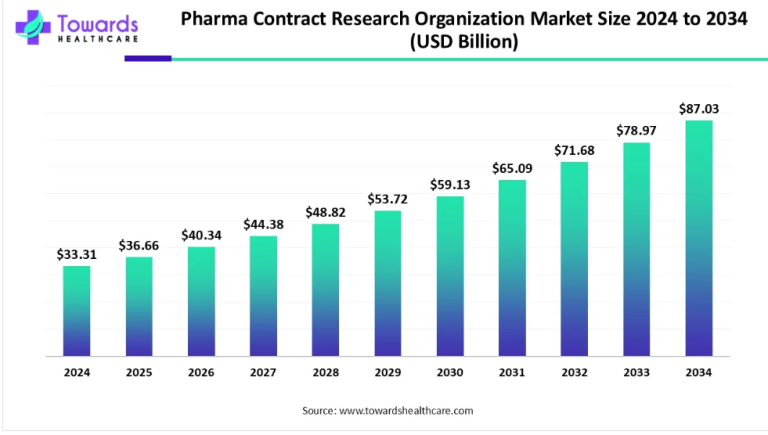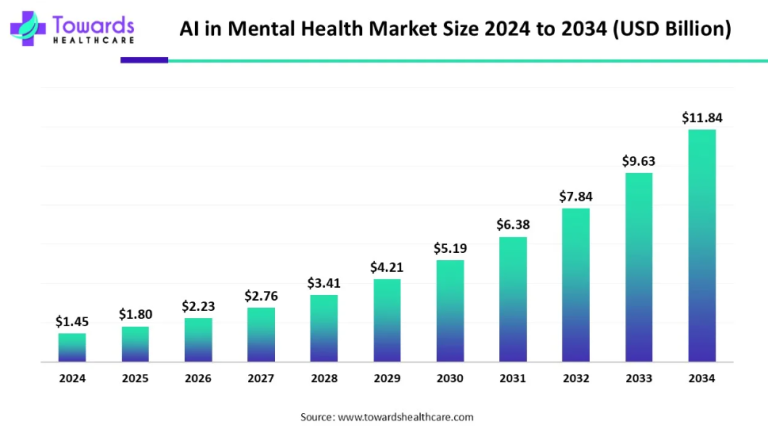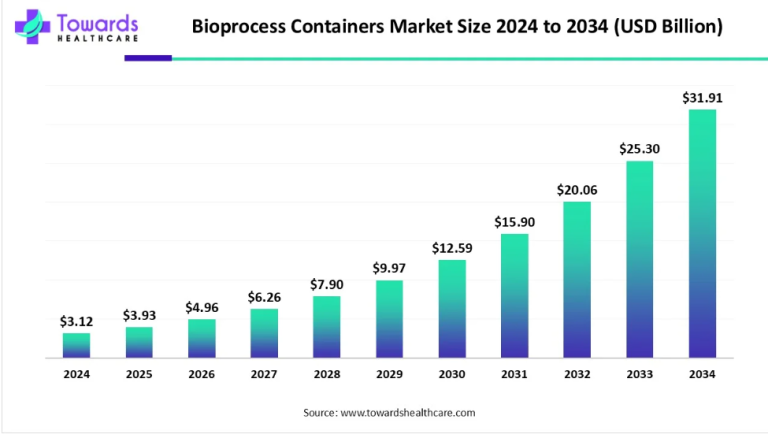Newborn Eye Imaging Systems Market Anticipates Surge in Revenue USD 441.42 Million by 2032
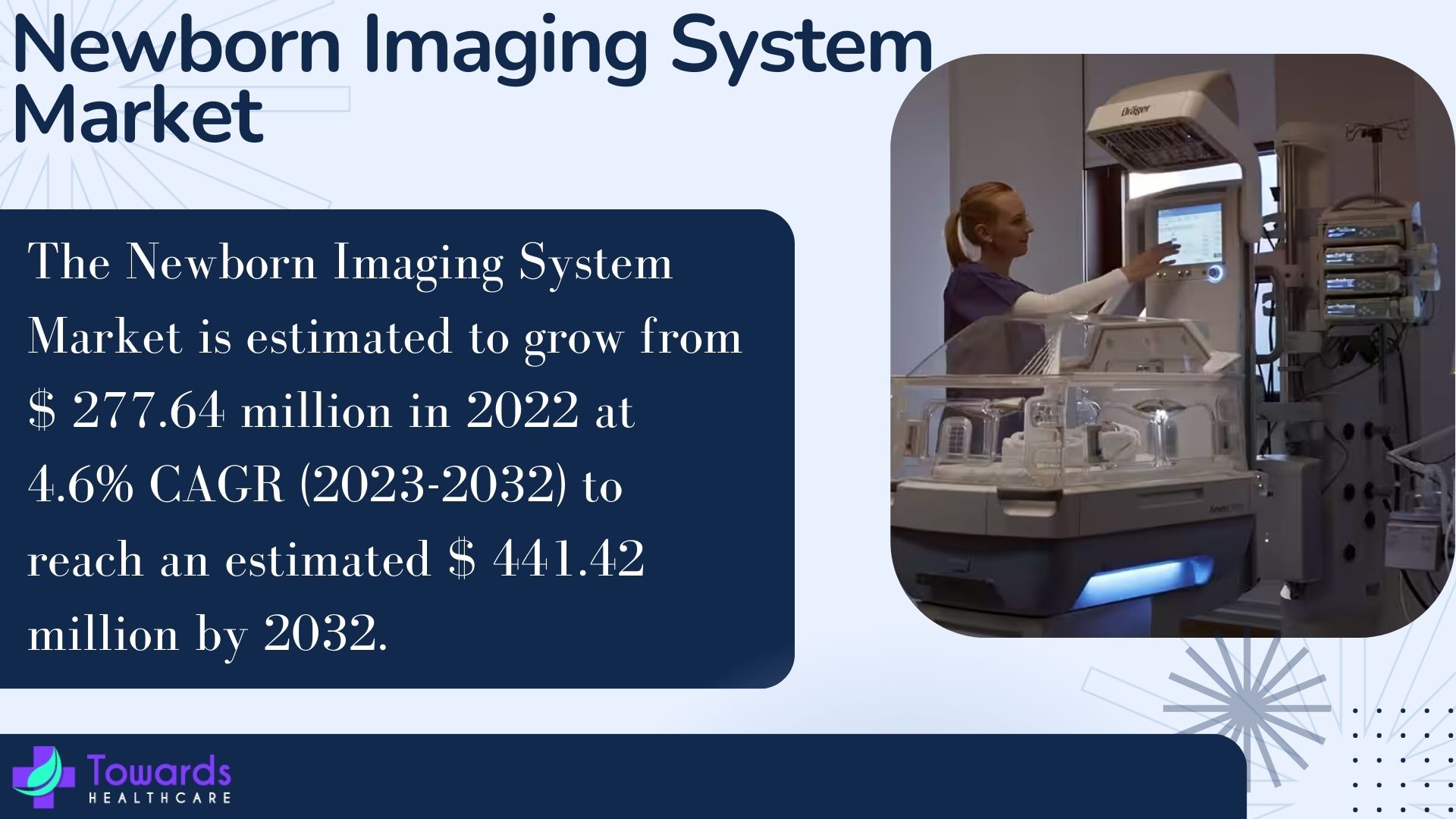
In the dynamic realm of healthcare technology, the newborn eye imaging systems market is poised for remarkable expansion. Projections indicate a substantial increase, with the market size expected to surge from its 2022 valuation of USD 277.64 million. This growth trajectory is forecasted to follow a robust 4.6% Compound Annual Growth Rate (CAGR) from 2023 to 2032. By the latter year, industry experts estimate the market to reach an impressive USD 441.42 million.
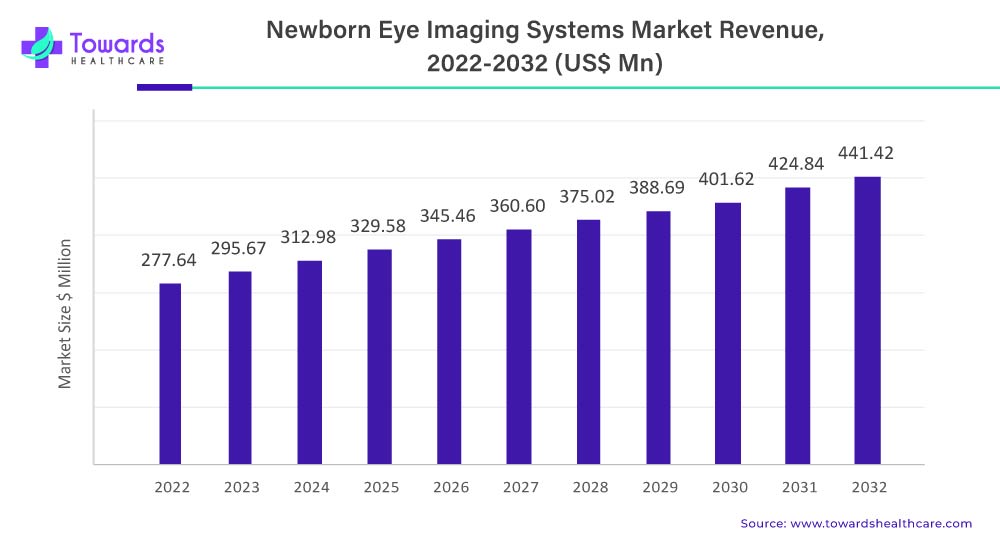
Table of Contents
ToggleAddressing the Surge: Retinopathy of Prematurity (ROP) Emerges as a Catalyst
Retinopathy of Prematurity (ROP): A Pervasive Concern
One of the key drivers fueling this growth is the escalating prevalence of Retinopathy of Prematurity (ROP). As neonatal care becomes more sophisticated, the incidence of ROP has seen a parallel rise. This eye disorder affecting premature infants necessitates advanced imaging systems for accurate diagnosis and timely intervention.
Rising Healthcare Expenditure: A Supporting Pillar
Parallelly, the surge in healthcare expenditure contributes significantly to the burgeoning newborn imaging system market. Governments and private entities alike are allocating substantial resources to enhance healthcare infrastructure, driving the adoption of cutting-edge imaging technologies for neonatal care.
Ongoing R&D in Retinopathy of Prematurity (ROP) creates fascinating growth opportunities
The capacity to image the retina and create tools for picture analysis is quite interesting. Since its function needs the retina to see the outside world, the retinal structures involved in image creation must be optically transparent. Retinal imaging is referred to as a non-invasive screening technology that produces high-resolution pictures of the back of a patient’s eye undergoing diagnosis.
Retinal imaging is continuously developing, and innovative research findings are swiftly converted into therapeutic applications. Certain severe eye disorders, along with systemic diseases, appear in the human eye’s retina. This report majorly focuses on eye disorders associated with newborns.
Eye examination in the early phases of life is of most importance because if vision disorders are not detected in early childhood, it may result in long-term consequences. Most of the vision problems that cause adolescent blindness can be addressed if diagnosed early through comprehensive newborn screening. The most common eye disorders in newborn babies are retinopathy of prematurity, ocular development, refractive state, strabismus, visual acuity, color vision, visual functions, visual fields, and others.
Retinal imaging assists in the diagnosis, follow-up, management, and assessment in all of these disorders. These disorders prominently require an eye imaging system to detect and manage such disorders. There have been great breakthroughs in both design and technology over the years. Such developments have applications in the majority of pediatric retinal illnesses, while the designs of new devices have often been limited to usage in adults.
The newborn eye imaging systems market refers to the market for specialized imaging systems used to capture images of a newborn’s eyes. These systems are designed to detect various eye disorders in newborns, such as retinopathy of prematurity (ROP), which can lead to blindness if not detected and treated early. The global newborn eye imaging systems market is expected to experience significant growth in the coming years, driven by several factors.
One key factor is the increasing incidence of ROP, which is often associated with premature birth and low birth weight. As the number of premature births continues to rise worldwide, the demand for newborn eye imaging systems market is expected to increase as well.
Another factor driving market growth is the increasing awareness and adoption of early screening programs for ROP. Many countries have implemented screening programs to identify and treat ROP early, which has led to increased demand for newborn eye imaging systems market. Additionally, advancements in technology and the introduction of new imaging systems are also expected to drive market growth. New imaging systems are being developed that provide higher-resolution images and more accurate diagnoses, which is expected to increase their adoption in hospitals and clinics.
The Alarming Rise of Retinopathy of Prematurity: Understanding the Causes and Implications for Preterm Infants
According to the World Health Organization (WHO), cataract, retinopathy of prematurity (ROP), and vitamin A deficiency are among the leading causes of childhood blindness worldwide.
Retinopathy of Prematurity (ROP) is a potentially blinding eye disorder that affects preterm infants. It occurs when the blood vessels in the retina of the eye do not develop properly, leading to abnormal growth of new blood vessels that can cause scarring and retinal detachment. ROP can cause severe vision impairment or even blindness if left untreated.
The incidence of ROP is increasing worldwide, particularly in low- and middle-income countries where access to high-quality neonatal care is limited. Factors that contribute to the development of ROP include prematurity, low birth weight, prolonged exposure to supplemental oxygen, and poor nutrition.
ROP causes irreversible vision impairment in about 32,300 infants worldwide each year, 20 percent of whom become blind or have a severe visual impairment.
Early detection and treatment of ROP are crucial for preventing severe visual impairment and blindness. Screening for ROP typically involves using an indirect ophthalmoscope to examine the retina, which can be challenging and time-consuming for clinicians. As a result, there is a growing need for new technologies to improve ROP screening and diagnosis.
One promising technology is the use of digital retinal imaging systems, which provide high-resolution images of the retina and can be used to identify signs of ROP. These systems are non-invasive and can be used at the bedside, making them particularly useful for screening preterm infants in neonatal intensive care units (NICUs).
Several companies are developing digital retinal imaging systems specifically designed for use in newborns, including the RetCam from Natus Medical Incorporated and the Pictor Plus from Volk Optical. These systems use advanced imaging technology to capture detailed images of the retina, which can then be analyzed by clinicians to identify signs of ROP.
The market for newborn eye imaging systems market is expected to grow significantly in the coming years, driven by the increasing incidence of ROP and the need for more efficient and effective screening and diagnosis tools. Other factors contributing to market growth include advances in imaging technology, increasing awareness of the importance of early ROP detection and treatment, and rising demand for non-invasive diagnostic tools. ROP is a serious eye disorder that can cause lifelong vision impairment or even blindness if left untreated.
Early detection and treatment are crucial for preventing severe visual impairment, and digital retinal imaging systems are emerging as promising technology for improving ROP screening and diagnosis. As such, the market for newborn eye imaging systems market is expected to experience significant growth in the coming years.
Massive Government Support to Improve Infant Eye Care
The rising government support for newborn eye imaging systems market is playing a crucial role in the growth of this market. Many governments across the world are focusing on improving their healthcare infrastructure, which includes the adoption of advanced technologies such as eye imaging systems for newborns. In addition, several government initiatives are being launched to promote the use of these systems, including the provision of funding for research and development, awareness campaigns, and incentives for healthcare providers to adopt these technologies.
For example, in the United States, the National Institutes of Health (NIH) provides funding for research into retinopathy of prematurity (ROP) and the development of new imaging technologies for the detection of ROP. Similarly, in India, the government has launched several initiatives to improve the healthcare infrastructure, including the implementation of the Rashtriya Bal Swasthya Karyakram (RBSK) program, which includes the provision of free eye screening for newborns. Thus, the rising government support for newborn eye imaging systems market is expected to boost the adoption of these systems, particularly in developing countries where the burden of ROP is high, but healthcare resources are limited.
Furthermore, in many countries, government agencies or ministries of health play a key role in promoting and regulating healthcare practices, including those related to newborn care. As such, they can influence the adoption and utilization of new technologies like newborn eye imaging systems market through policy and funding decisions.
Collaborating for Better Neonatal Care and the Role of Healthcare Expenditure
The collaboration between government bodies, healthcare providers, and medical device manufacturers is crucial for the successful implementation of newborn eye imaging systems market. The rising government support towards the betterment of neonatal care is contributing to the growth of the newborn eye imaging system market. Governments across the world are increasing their healthcare expenditure to improve the overall healthcare infrastructure and to reduce neonatal mortality rates.
According to a report by the World Health Organization (WHO), approximately 2.4 million neonatal deaths occurred globally within the first week of their lives.
This has led to an increase in government support towards better neonatal care, including the adoption of advanced medical technologies such as newborn eye imaging systems market. Additionally, collaborations between healthcare providers and medical device manufacturers are driving the development of new and innovative newborn eye imaging systems market. Medical device manufacturers are investing heavily in research and development activities to improve the accuracy and efficiency of newborn eye imaging systems market.
Furthermore, healthcare providers are partnering with medical device manufacturers to integrate these advanced technologies into their neonatal care programs. These collaborations are resulting in the development of newborn eye imaging systems market that offer advanced features such as high-resolution imaging, real-time analysis, and data management capabilities.
Moreover, the rising government support towards better neonatal care and collaborations between healthcare providers and medical device manufacturers are driving the growth of the newborn eye imaging systems market. These factors are expected to continue to shape the market in the coming years, as governments and healthcare providers focus on improving neonatal care and reducing neonatal mortality rates.
Overcoming the Challenge of High-Cost
Newborn eye imaging systems market are highly specialized medical devices that require advanced technology and expertise for their design, manufacturing, and maintenance. As a result, they often come with a high price tag, which can be a major barrier to their adoption and utilization, especially in low-resource settings. In developing countries, where healthcare budgets are limited and there are competing priorities for healthcare spending, the high cost of newborn eye imaging systems market can make it difficult for healthcare facilities to justify their purchase.
In some cases, the cost may be prohibitive, leading to a lack of access to these systems and consequently, a failure to detect and treat retinopathy of prematurity in newborns.
In addition, even when newborn eye imaging systems market are purchased, the high cost of maintenance and repairs can also be a challenge for healthcare facilities in low-resource settings. The lack of trained personnel and equipment can result in longer downtime and higher costs for repairs and replacements.
To address this restraint, there are various potential solutions that can be explored. One approach is to encourage collaboration between governments, healthcare providers, and manufacturers to reduce the cost of these systems. Governments can provide subsidies or tax breaks to manufacturers to reduce the cost of production, while healthcare providers can pool resources to purchase systems in bulk, thus benefiting from economies of scale.
Another approach is to develop innovative financing mechanisms, such as leasing or pay-per-use models, to make newborn eye imaging systems market more accessible and affordable for healthcare facilities. This would allow facilities to pay for the systems over time, making it easier to manage their budgets and prioritize other healthcare needs.
Furthermore, there is a need for continued investment in research and development to improve the affordability and accessibility of newborn eye imaging systems market. This could include the development of lower-cost systems that are easier to use and maintain, as well as the integration of artificial intelligence and other advanced technologies to improve the accuracy and efficiency of screening. Thus, addressing the high cost of newborn eye imaging systems market is crucial for ensuring equitable access to this life-saving technology, particularly in low-resource settings where the burden of retinopathy of prematurity is highest.
Visionary Advancements: The Next Generation of Newborn Eye Imaging Systems Market
The development of more efficient and cost-effective imaging systems could significantly increase the adoption rates of newborn eye imaging systems market in low-resource settings. As technology continues to advance, there are opportunities to develop more compact and portable systems that are less expensive to manufacture and easier to transport to remote areas. This would make it easier for healthcare facilities in these regions to acquire and use the technology, potentially improving the diagnosis and treatment of retinopathy of prematurity.
Additionally, there is an opportunity to integrate the use of artificial intelligence (AI) into newborn eye imaging systems market. AI-powered systems can analyze images in real-time and provide immediate results, reducing the need for specialized personnel to interpret the images. This can significantly reduce the cost of using the technology while also increasing efficiency and accuracy.
Furthermore, the development of telemedicine solutions can also create new opportunities for the adoption of newborn eye imaging systems market. Telemedicine enables remote diagnosis and treatment, which can be especially important for healthcare facilities in low-resource settings that have limited access to specialized healthcare professionals. With the use of telemedicine, healthcare facilities can send images to specialists in other locations for interpretation, reducing the need for costly and time-consuming travel.
Moreover, technological advancements present significant opportunities for the growth and adoption of newborn eye imaging systems market in low-resource settings, potentially improving the diagnosis and treatment of retinopathy of prematurity and other eye conditions in newborns.
Basic Devices are Leading the Current Market
Newborn eye imaging systems market consist of two types of devices such as basic devices and wireless devices. Basic devices refer to traditional, non-connected imaging systems that require a physical connection to transfer images from the device to a computer or other storage medium. These devices typically have a lower cost compared to wireless devices, making them more accessible to healthcare facilities with limited budgets. However, they may be less convenient to use, as they require a physical connection to transfer data.
A tonometer, phoropter, retinoscope, autorefractor, Snellen chart, retinal camera, ophthalmoscope, and VT 1 vision screener are just a few of the tools used to diagnose eye health. In the fields of vision and health, these resources serve as stepping stones. They support the diagnosis, care, and prevention of vision issues.
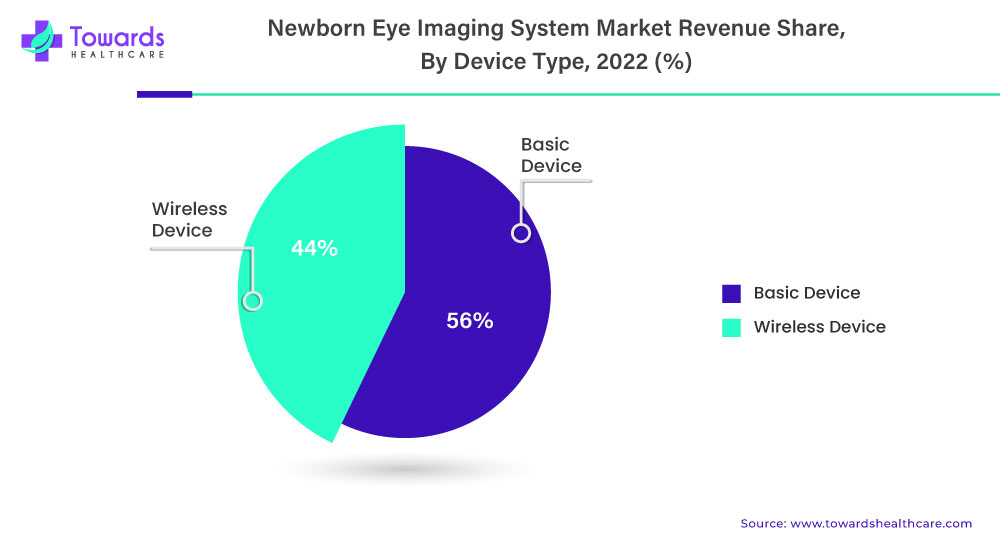
This eye-testing technology is available to doctors and other healthcare professionals, enabling them to provide patients with the quality care they deserve. In addition, scientists have created a tool that enlarges previously indistinguishable cells at the back of the eye. The technique has the potential to be very helpful for ophthalmologists, especially in the early detection and evaluation of age-related macular degeneration and new therapeutic choices.
Both basic and wireless devices play an important role in the newborn eye imaging systems market, but basic devices are currently leading due to their affordability and accessibility. As technology continues to advance, it is possible that wireless devices may become more cost-effective and widely adopted in the future.
Mapping Regional Dynamics for Growth and Expansion
North America is the largest market for newborn eye imaging systems market, owing to the presence of a large number of key players in the region, favorable government initiatives, and advanced healthcare infrastructure. The United States is the major contributor to the market in this region.
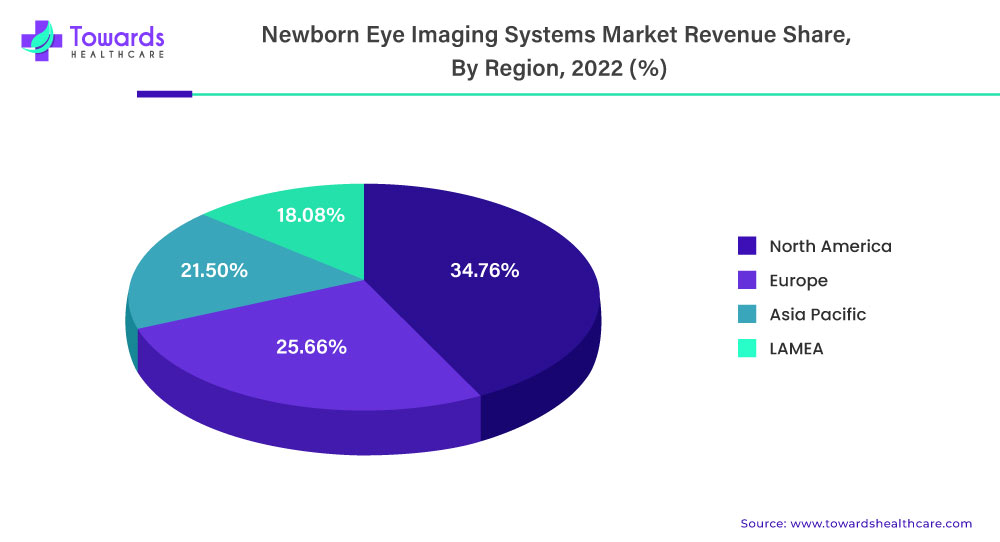
Europe is projected to grow at the fastest rate in born-eye imaging systems, driven by the increasing prevalence of retinopathy of prematurity and government initiatives to promote neonatal care. The United Kingdom, Germany, and France are the major contributors to the market in this region. The increasing prevalence of retinopathy of prematurity (ROP) eye diseases significantly drives the growth of this region. Retinopathy of prematurity is a Vaso proliferative retinal condition that mostly affects newborn preterm babies.
It is a completely preventable cause of childhood blindness. With the increased survival of preterm newborns, ROP has grown to become the major cause of preventable childhood blindness in this region. According to the Europe PMC Funders’ Group, ROP is a blinding illness of preterm children that constitutes a substantial clinical concern, accounting for up to 40% of all childhood blindness.
Asia Pacific is expected to witness significant growth in the market, owing to the rising prevalence of retinopathy of prematurity and increasing healthcare expenditure in the region. Moreover, the increasing awareness about the benefits of early detection and treatment of retinopathy of prematurity is also contributing to market growth in this region.
Navigating the Growth Trajectory: A Closer Look
Technological Advancements: Catalysts for Market Expansion
The landscape of newborn imaging systems is undergoing a transformative shift, propelled by continuous technological advancements. Innovations such as enhanced imaging resolution, real-time monitoring capabilities, and user-friendly interfaces are distinguishing the latest systems, making them indispensable in neonatal care units.
Market Penetration: Expanding Reach for Enhanced Accessibility
The expanding market is not confined to developed regions alone; it’s witnessing substantial penetration in emerging economies. This inclusivity is fostering enhanced accessibility to state-of-the-art newborn imaging systems, addressing healthcare disparities and ensuring a wider reach for these critical technologies.
Future Outlook: A Lucrative Horizon
As we delve into the future, the newborn imaging system market appears poised for sustained growth. Factors such as ongoing research and development, strategic collaborations, and a steadfast focus on addressing emerging healthcare challenges are anticipated to propel the market to new heights.
The newborn imaging system market is experiencing a transformative journey, fueled by the intersection of technological innovation and healthcare priorities. The forecasted surge, driven by the prevalence of Retinopathy of Prematurity and increased healthcare spending, positions this market as a key player in the evolution of neonatal care. As the industry embraces advancements, the horizon looks promising, promising enhanced diagnostic capabilities and improved outcomes for the tiniest members of our society.
